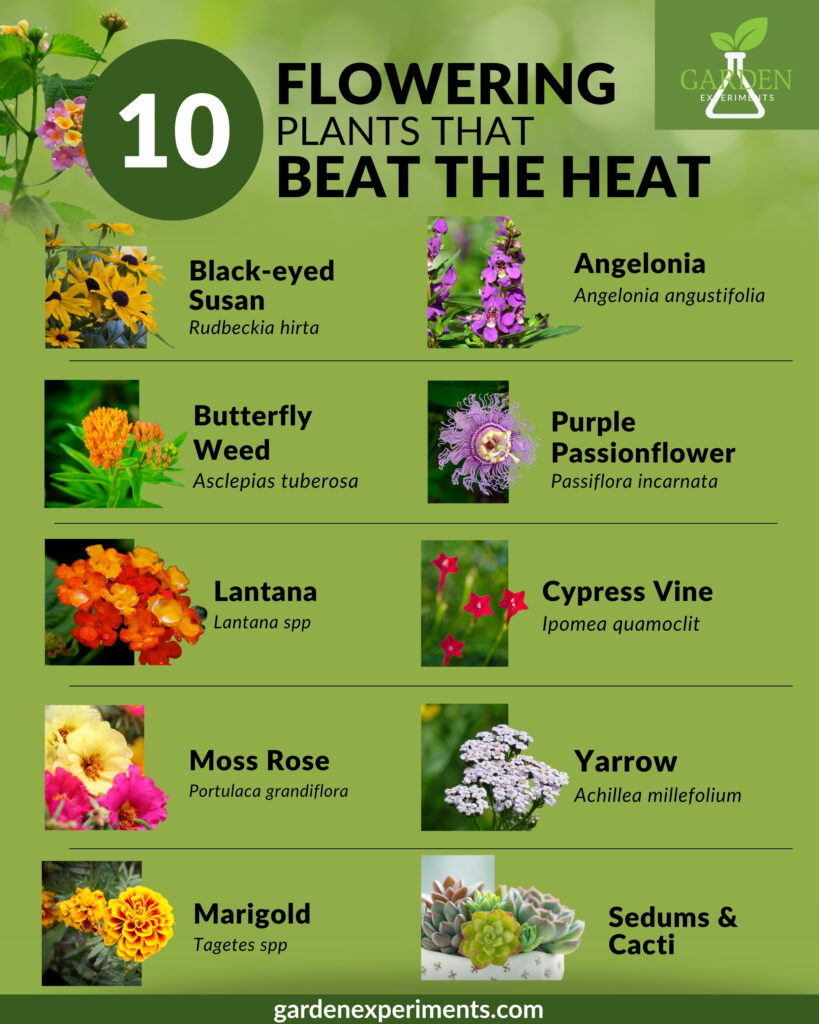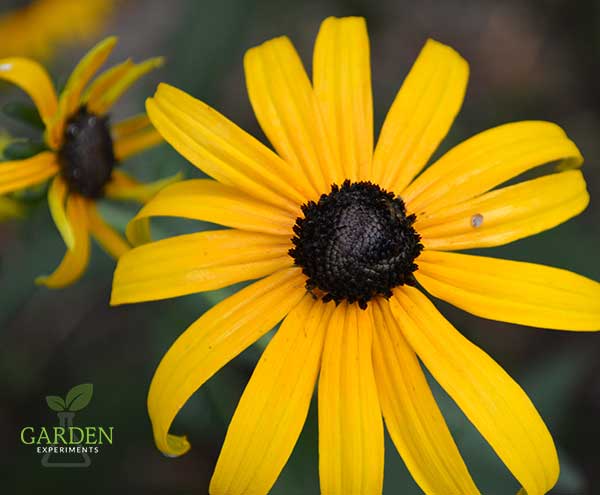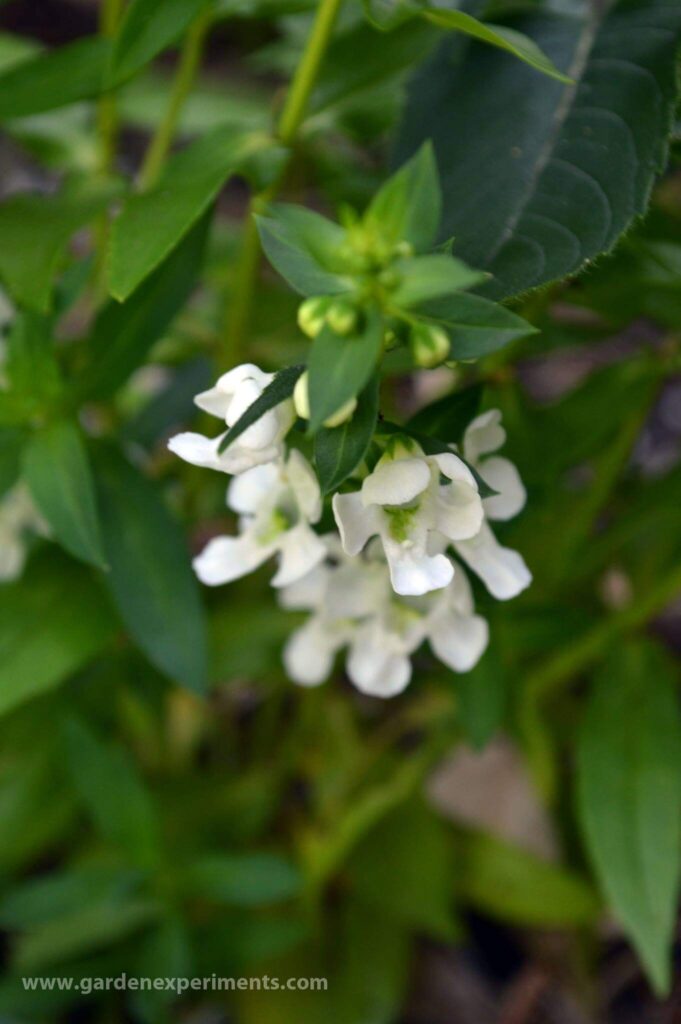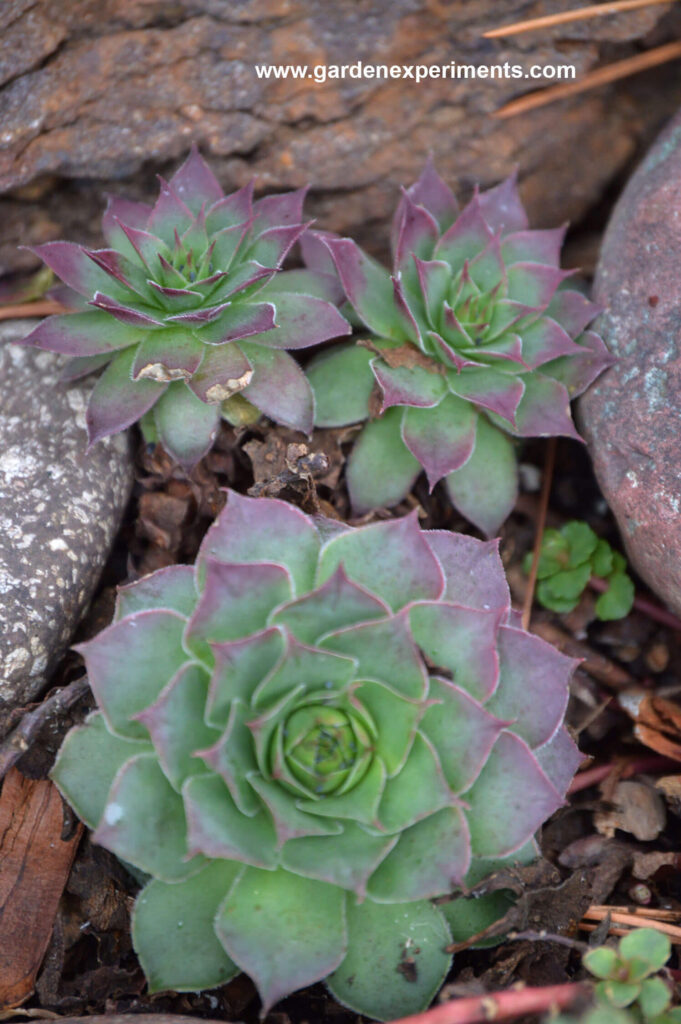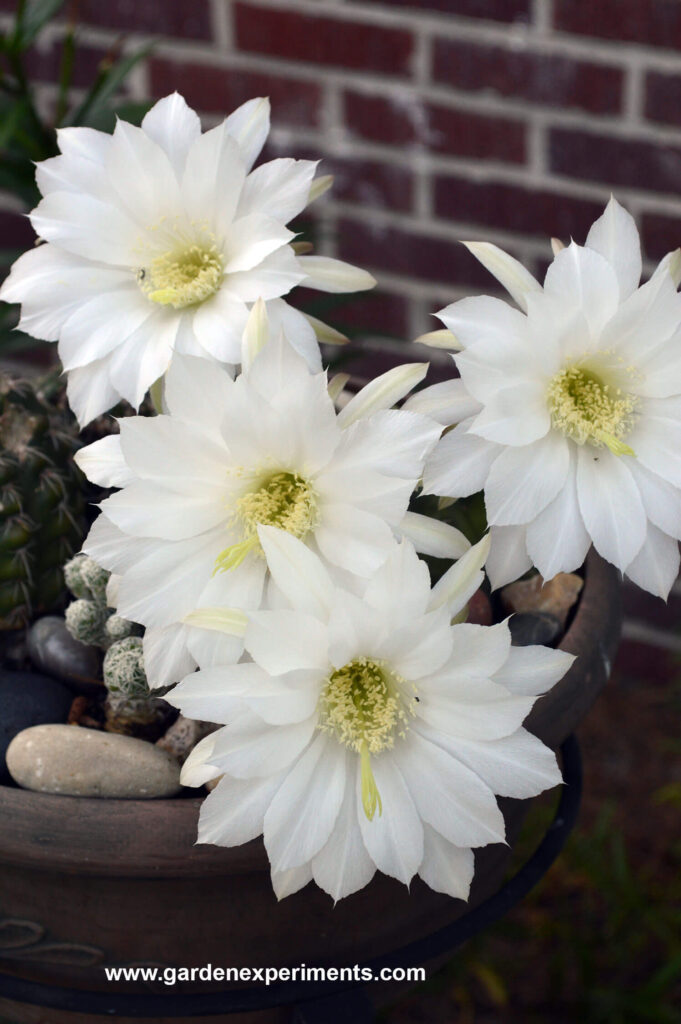The summer heat has arrived and it’s pretty miserable outside. When we’re in a heat advisory, the temperature outside FEELS like over a hundred degrees with the high humidity.
I’m watering in the early morning and sometimes at night, just to keep up with it, but the plants are still suffering. However, some of my plants are thriving, in spite of the high temperatures and dry weather.
So if you’re like me and want flowers that can tolerate the relentless heat and humidity of late summer, here are some of my favorite flowering plants that I would recommend if you’re looking for heat-tolerant blooms; remember, I’m in zone 7b, so take a look to see if these will do well in your area before planting.
Black-eyed Susan (Rudbeckia hirta)
This is just a favorite plant of mine. It’s so easy to grow and requires almost no maintenance except for the removal of dead stalks. Plant it and forget it.
It’s the perfect plant for those hot and dry summer days. Black-eyed Susan flowers are beautiful too. Just be sure to wear gloves when you work with the plant as the stems have little hairs that sometimes irritate the skin.
Plant in full sun to part-shade in just about any type of soil. Water when first planted, but after they are established, their water requirements are low. They are drought-tolerant and deer resistant.
Read more about black-eyed Susans.
Moss Rose or Portulaca (Portulaca grandiflora)
These brightly colored blooming succulents seem to thrive in dry, hot conditions. They don’t require a lot of water, require well-drained soil, and prefer to be in full sun. You can even root cuttings from a portulaca very easily. Just stick a cut end in to the ground and keep it watered for a few days.

Butterfly Weed (Asclepias tuberosa)
When in doubt, go with a native plant. They are built for the conditions in your zone and can take the heat, or cold, or whatever. Butterfly weed produces brilliant orange flowers and helps out our native butterflies by providing food and acting as a host plant. You just can lose with this one! Learn more about butterfly weed.
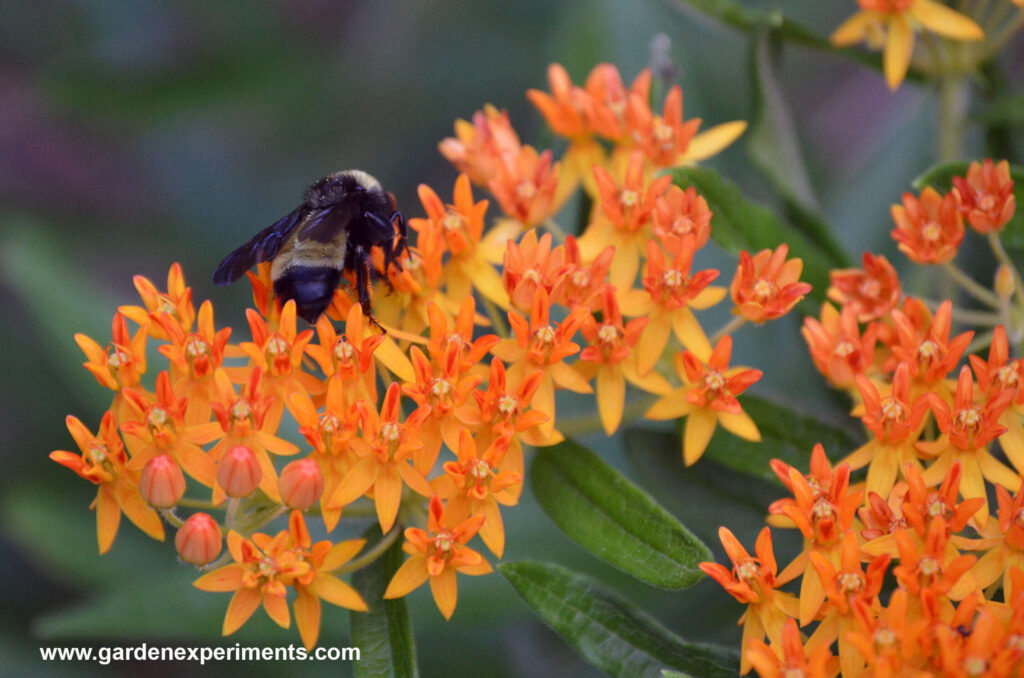
Marigolds (Tagetes spp)
Yes, this garden standard is a workhorse, producing lots of blooms in the middle of the hot summer. I grow mine from seed each year and put them around my vegetable plants. They require very little care in the summer and I can collect seeds from them for the following year. They prefer full sun and well-drained but humus rich soil. Marigolds are annuals but they often self-seed.
Lantana (Lantana spp)
These lovely plants attract butterflies and hummingbirds. There are many different colors and heights, so be sure you get the one that is appropriate for the location you are planting them in. At my local garden store, they never mark plants based on their expected height, so I’ve had some that stopped growing at about 1.5 feet and others that reached as tall as 4 feet. Be prepared in case you need to relocate them based on how tall they grow. Lantanas are drought-tolerant and they are deer-resistant!
I particularly like the orange-red lantana and the pink-yellow ones. When we lived in Houston, TX, we had these, and they have been a favorite of mine ever since. Most lantanas are perennial and prefer full sun with well-drained soil.
Angelonia (Angelonia angustifolia)
This is a new one for me to grow, but it is doing very well in these hot conditions. I think that they look best when clustered together to create a mass of color with their small flowers. The common colors to find in stores are purple, raspberry, and white. I have them planted in a bed that is themed with purple and white plants and it makes a nice edge.
Plant in full sun, but it will tolerate some shade. If your plant begins to become spindly, cut it back and it will grow thicker and rebloom. They are drought tolerant and stand up in high heat, continuing to bloom. They are also deer resistant, which is always a bonus in my neighborhood. They bloom for a very long period of time.
Purple passionflower (Passiflora incarnata)
If you want a vine with gorgeous flowers that can withstand summer heat, then a native is a great choice. Full sun and well-drained soil is a must. They have very low water requirements. Purple passionflower is also a host plant for some of our local butterflies.
I have always loved these unique flowers. These vines are often found in fields in the middle of the summer. If they can make it there, they’ll do great in your garden. Learn more about purple passionflower.
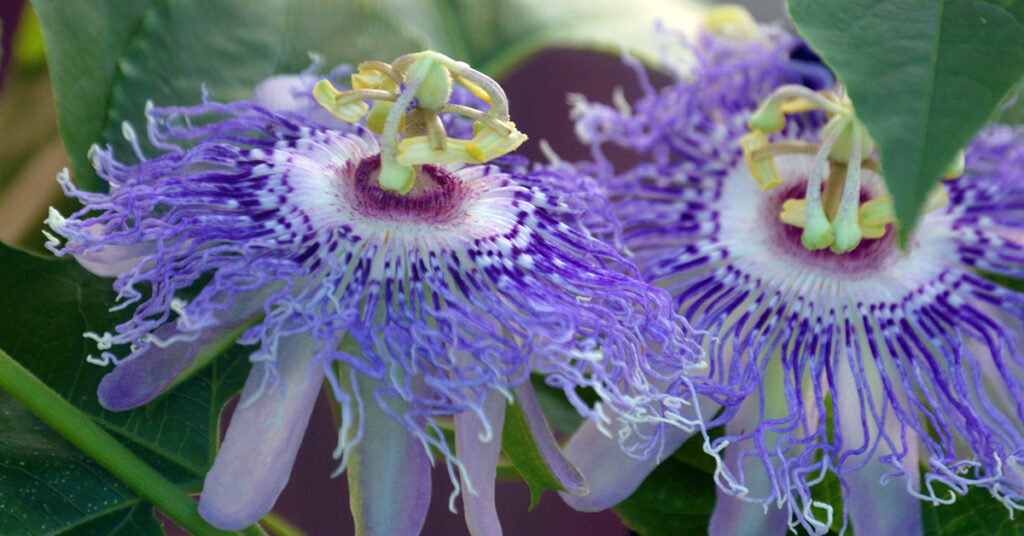
Cypress vine (Ipomea quamoclit)
This dainty-looking vine is actually very hardy when it comes to heat and drought. It prefers full sun and well-drained soil. The bright red flowers are trumpet-shaped and are quite attractive. Cypress vine is an annual.
A word of warning though, this plant reseeds itself VERY well. Wherever you plant it, you will have about 100 of its siblings the following year. If you don’t mind the additional plants, or it’s in an area that you can mow to keep the plant population down, then go ahead and plant it. It is also an aggressive grower and will quickly outgrow other vines or plants in the area. You’ll have your hands full keeping it under control.
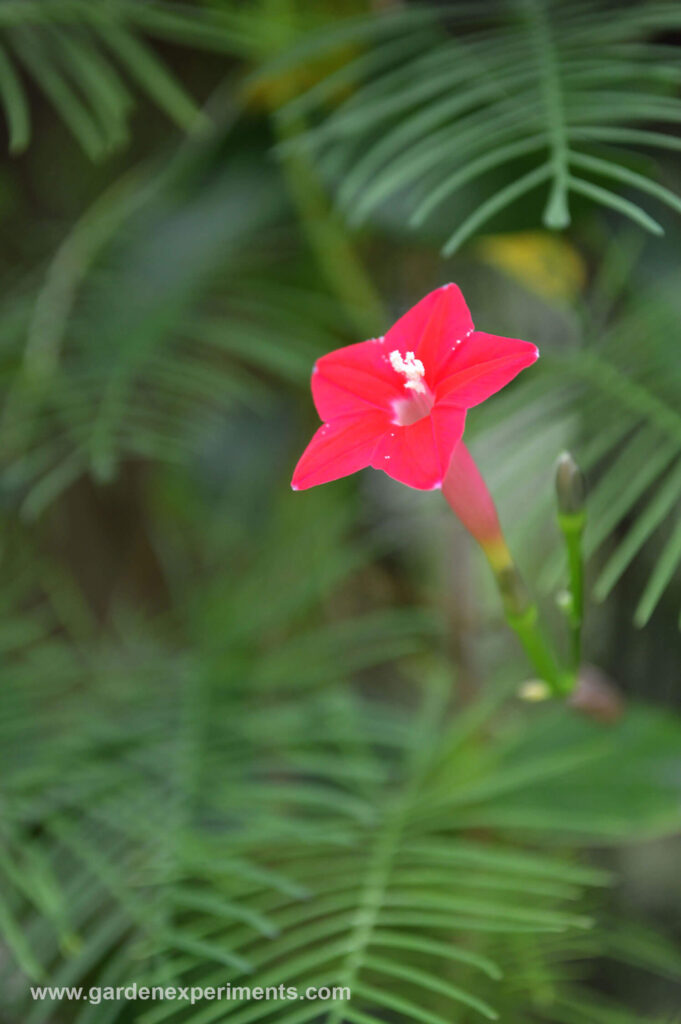
Yarrow
I have always thought that the feathery leaves of yarrow are beautiful. The plants are a welcome addition to my garden, even without the blooms. The flowers can be bright yellow, red, pink, or white, so find the one that works for you.
Yarrow is an excellent, low-maintenance plant; it is another “plant-it-and-forget-it” garden plant. It prefers full sun with well-drained soil. You might want to stake the flowers to keep them upright. If you want more plants, dig up a small piece and plant it elsewhere. Yarrow spreads pretty quickly. It is a perennial.
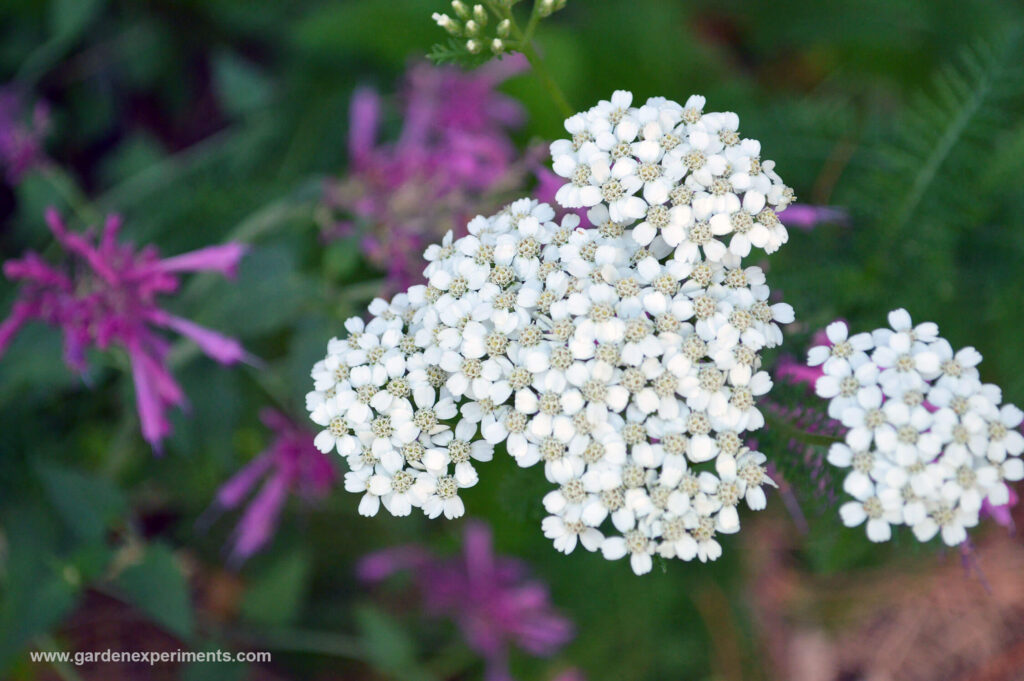

Sedums and Cacti
I know, I know, this is a huge category of plants, but definitely one worth considering if you want extremely low maintenance plants to put in a very sunny, dry locations in your garden. There are so many choices and shapes, you are sure to find one that you fall in love with.
You can use sedums as groundcover since most spread and multiply pretty easily. Some of them will even produce pretty flowers.
I love cacti for the blooms. If you put them in a very bright spot with the right soil, they will reward you with amazing flowers.
